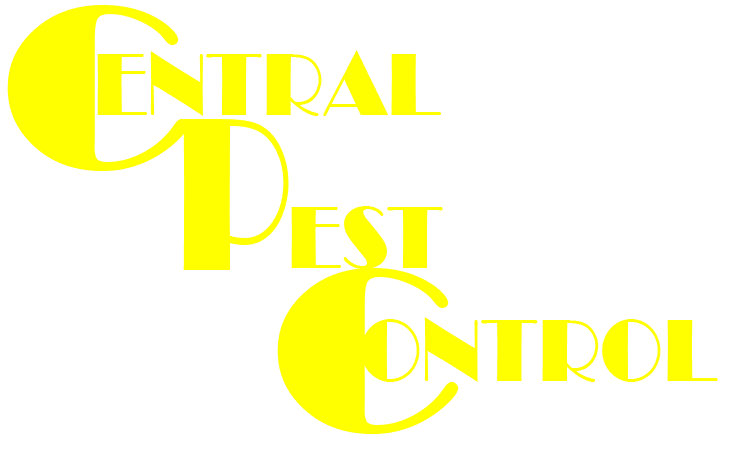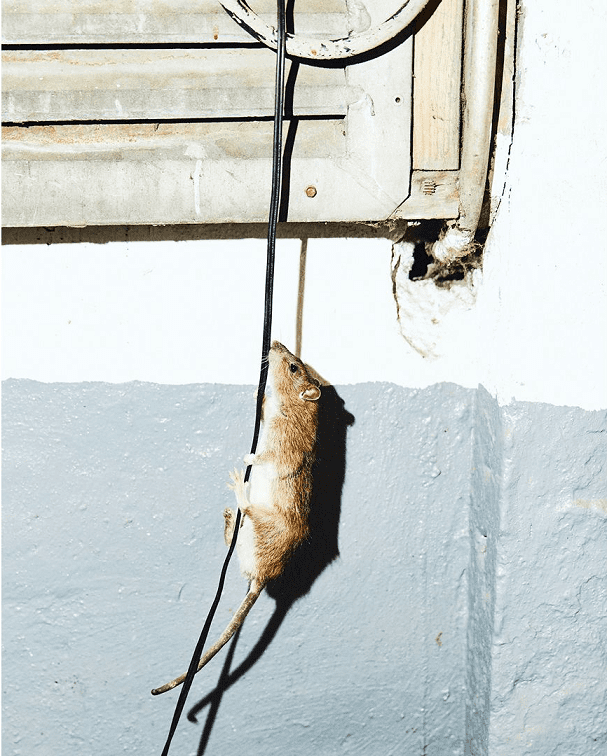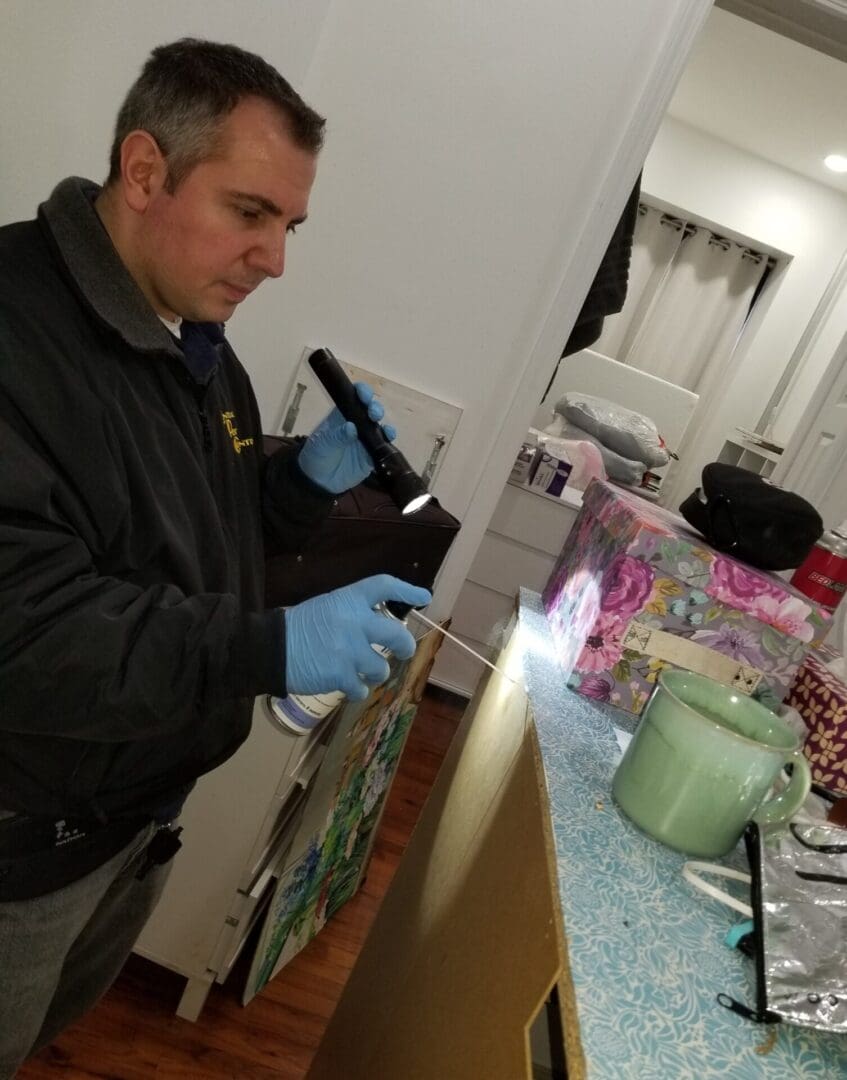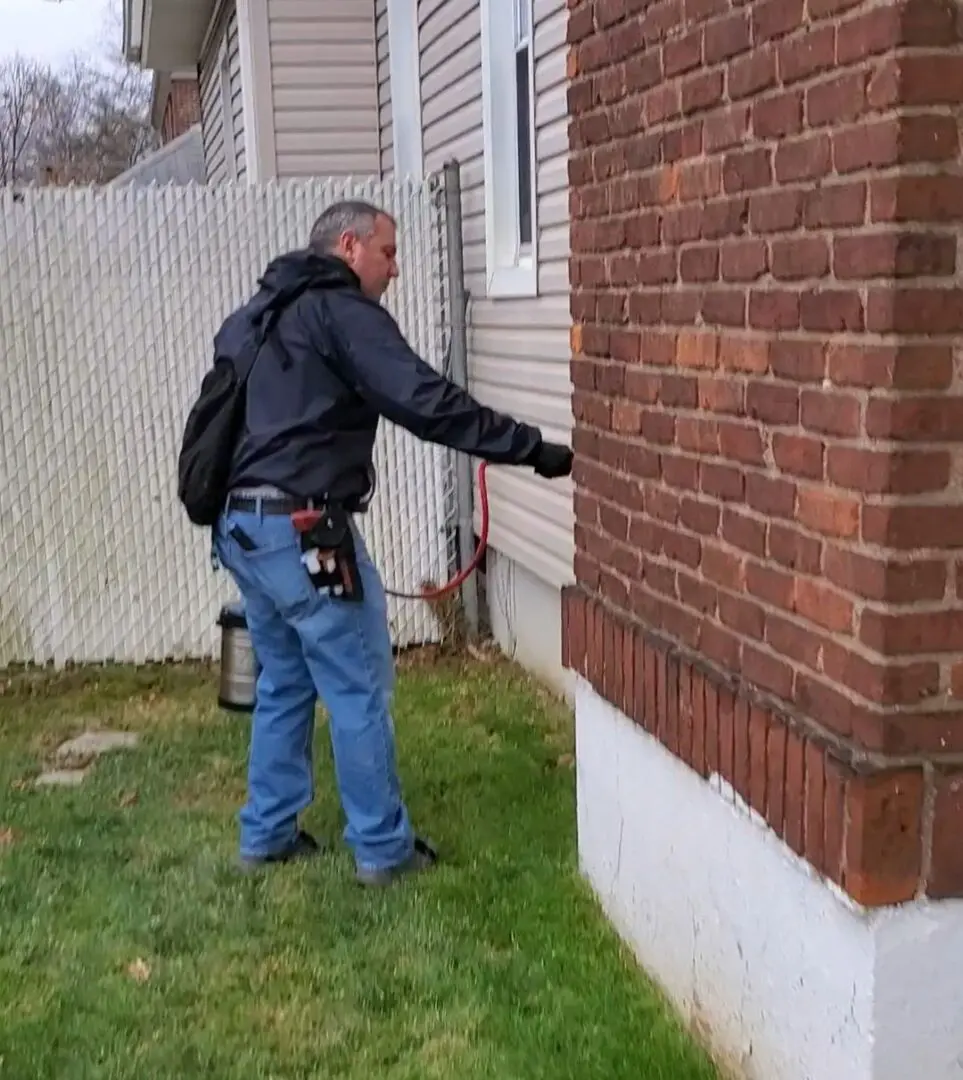
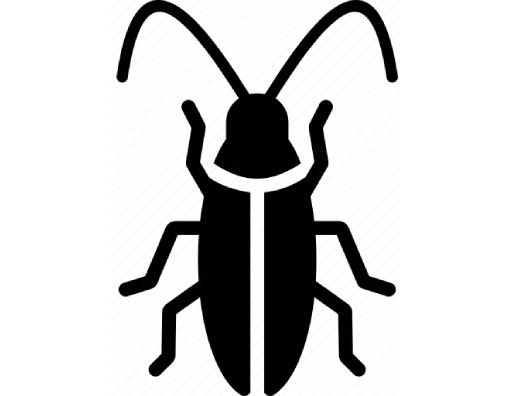
Central Pest Control: Types of Pests We Can Get Rid of for You

Even the finest homes can become infested with pests due to the complex nature of homes and the constant pest pressures surrounding them. People are often concerned about unnecessary pesticide exposure while having a very low tolerance for pests in their homes. They want effective pest management and are concerned with health and safety in and around their homes. Central Pest Control addresses each of these concerns. Central Pest Control is committed to responsible pest management. The Central Pest Control process integrates all the necessary steps to control pests while being sensitive to these issues. Below is Central Pest Control’s strategy for delivering great pest management in residential homes.
1. INSPECT
Inspection is the cornerstone of our Integrated Pest Management Plan. The reason is simple. When you have good information, you can make well-informed decisions. Every home is different. Construction type, pest pressures, and family situation all contribute to the need for a situational analysis approach to managing pests so that responsible pest management can occur.
2. PRESCRIBE
We will choose the right treatment based on the information gathered during our inspection and choose the best option to fit your unique situation.
3. TREATMENT
Training and knowledge are required to carry out the required action plan, ensuring that proper safety precautions are taken, and the results are consistent with our objectives. Several steps may be taken, including exclusion, physical repair, harborage reduction, sanitation, and trapping methods, as well as pesticide application.
4. COMMUNICATE
As a Central Pest Control customer, you will be informed of all actions taken prior to treatment. You will be brought into the pest management process so that you understand what is going on in your home.
5. FOLLOW-UP
When a service ends, it’s just the beginning.
Pest management is an ongoing process, not just a one-time event. Following up after initial treatment is a must so that an inspection can occur to be sure that our objectives are reached and satisfaction is ensured. Many pest problems are the result of continuous pest pressures on the home that require ongoing service to keep the problems at bay. Anticipating future pest pressures and developing a responsible program for the ongoing protection of your home. Each service will serve as a follow-up from the last, and early detection or prevention of new pest developments.
Mosquito Services

The first stage of control is to identify all potential sources of insect infestation in and around your home.
While nothing can eliminate every mosquito from your property, we guarantee you won’t be bothered by mosquitoes and lantern flies between treatments.
NO COMMITMENTS, NO CONTRACTS. CANCEL ANYTIME.
We’re so confident in our home exterior barrier treatment services that we don’t require long-term commitments. The most effective way to keep mosquitoes and lantern flies under control is to set up a regular maintenance program.
Mosquito Treatment
Our unique, multistep treatment process breaks the mosquito lifecycle. By identifying and treating habitat, mosquito larvae, and adult mosquitoes, we are able to eliminate the pests from your yard almost immediately. We come back every three weeks to keep them away for good. We proudly utilize the most effective mosquito control solutions available.
1. In2care pesticide-free trap: serviced monthly
2. Mosquito barrier treatment: two options; depends on how much vegetation breeding site density.
(1) Every three weeks
(2) Monthly + 1 In2Care Trap
Spotted Lanternfly Treatment
Since spotted lanternflies rarely cause damage to landscape trees, treatment is not necessary for the health of the tree; but if they become a nuisance, insecticides can be used. Organic oils and natural pyrethrins can be used when SLFs are found on plants, but repeated applications of these materials will be necessary as SLFs are very mobile, and more will move in after the pesticide wears off.
Special Event Treatments
Do you have an outdoor event planned? Don’t let mosquitoes ruin your special day! From outdoor weddings and community events to backyard birthdays and other family gatherings, we know mosquitoes aren’t on your guest list.
With just 48 hours’ notice, we can eliminate mosquitoes from your outdoor event space.
WE OFFER MANY DIFFERENT TREATMENT PLANS, INCLUDING OUR PESTICIDE-FREE ALTERNATIVE
FLYING INSECT SERVICES

The Problem:
Small flies, filth flies, biting and nuisance flies—they are all annoying—more importantly, they are all vectors of disease transporting dangerous bacteria and toxins to and from each spot they land upon. Hookworm, whipworm, tapeworm, pinworm, roundworm, cholera, bacillary dysentery, infantile diarrhea, typhoid, and paratyphoid are disease-causing organisms with which these flies are associated.
Small flies are usually found breeding in and feeding on damp organic matter or the organisms that grow in such materials. Locating and eliminating these breeding grounds/food sources is the first step of fly control.
Some common small flies are:
1. Fruit Flies
2. Drain Flies
3. Fungus Gnats
4. Moth Flies
5. Phorid Flies
Larger flies are usually found breeding in such areas as sources of trash, animal feces, or other decaying organic material, such as dead animals. It is within these sources which the female will lay her eggs. Females are capable of laying many eggs at one time, and within 24 hours, eggs hatch into small, white larvae known as maggots. Maggots feed on the same decaying, organic matter within which they hatched. The sole purpose of the larval fly is to store nutrients for the pupal stage of its life. After approximately four days, larvae develop small, hard, brown pupal cases in dry, dark locations.
Some common large flies are:
1. Houseflies
2. Flesh Flies (Green and Blue Bottle Flies)
3. Stable Flies
4. Cluster Flies
The Solution:
Fly elimination procedures include proper fly identification, source elimination, exclusion, and population reduction. In most cases, population reduction involves eliminating the source of the flies and excluding them from the environment. Other methods of reducing or eliminating flies include the use of Ultraviolet Pheromone Light Traps, Non-toxic Pheromone Traps, Toxic Baits, and Metered Space Sprays.
Every situation calls for different tools; our technicians will find the safest and most effective for your individual situation.
Ask us about our fly control programs:
1. Inspection and consulting
2. Exclusion
3. Sealing cracks and crevices
4. Trapping
5. Ultraviolet light installation
6. Metered space spray installation
7. High population clean out
8. Baiting
9. Residual treatments
STORED PRODUCT AND FABRIC PESTS

The Problem:
Indian Meal Moths are one of the most common stored product pests found in homes, stores, restaurants, and food processing plants. Its larva is a common grain-feeding pest found around the world, feeding on cereals, nuts, herbs, and dry grain products. Pet foods such as dried dog food, flaked fish food, and bird seed can also become infected.
Since the moths do not feed, they usually survive little more than a week. During this time, the female may deposit over 200 eggs, laid either directly on food or in crevices adjacent to the stored foods on which they feed.
Carpet Beetles feed on animal and plant substances such as carpets, wools, fur, stuffed animals, hair, hides, silk, and velvet, as well as seeds, grain, cereals, red pepper, and flour. Other substances include dog and cat food, leather, book bindings, dead insects, and bird and rodent nests.
Mealworms are the larval form of the mealworm beetle, a species of darkling beetle. Mealworms are seldom major stored product pests in the home. The larva is found in dark, undisturbed locations, feeding on collections of grain dust and cereal products.
Spider beetles are general scavengers that feed on a variety of plant and animal foods, including cereals, seeds, flour, meats, dried fruits and vegetables, dead insects, and rodent droppings. Common sites of infestation in the house include wall voids and ceilings or similar undisturbed areas where food materials have been collected.
Drugstore and Cigarette Beetles infest a wide variety of foods, tobacco, books, and upholstered furniture. In addition to being common stored-product pests, these beetles also become a homeowner nuisance by flying on windows and doors in heavy populations.
Cigarette beetles may feed on pyrethrum powder strong enough to kill cockroaches, and drugstore beetles often feed on poisonous rodent baits.
Silverfish and Firebrats eat a wide variety of foods, including glue, wallpaper paste, book bindings, paper, photographs, starch in clothing, cotton, linen, rayon fabrics, wheat flour, cereals, dried meats, leather, and even dead insects. Silverfish often live in damp, cool places such as basements and laundry rooms. Sometimes, they are found in a bathtub, sink, or washbasin, unable to climb out. Firebrats live in hot, humid places such as attics in summer and near furnaces, fireplaces, and heat pipes in winter.
Carpet Beetles feed on animal and plant substances such as carpets, wools, fur, stuffed animals, hair, hides, silk, and velvet, as well as seeds, grain, cereals, red pepper, and flour. Other substances include dog and cat food, leather, book bindings, dead insects, and bird and rodent nests.
Spider Beetles are general scavengers that feed on a variety of plant and animal foods, including cereals, seeds, flour, meats, dried fruits and vegetables, dead insects, and rodent droppings. Common sites of infestation in the house include wall voids and ceilings or similar undisturbed areas where food materials have been collected.
The Solution:
The first stage of control is to identify all potential sources of insect infestation in a home. Infested food items should be discarded, promptly used up, or treated with heat or cold to kill insects found in the food. A thorough clean out of all food sources is critical to managing stored product pests.
Cabinets and shelving should be vacuumed to remove live insects, flour, and other food material from cracks and crevices that can provide these pests with a food source. Storing items in insect-resistant containers or cold storage can prevent re-infestation.
Mating disruption, pheromone insect traps, and insect growth regulators are used to control the current populations and prevent future generations from taking root.
